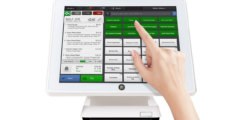After the unprecedented work from home program that took place across the world, businesses now have adopted the remote working model as the new normal. Though remote work existed even before, the past couple of years witnessed a spike in the remote working model. The adverse conditions forced businesses to find better ways to enable remote working options and provide support for smooth business functioning.
Where companies previously believed remote work will develop a more casual approach among employees for work, it has also shown heightened levels of employee productivity and business growth. As per findings, remote working has become effective, because of the rise in the use of collaboration and communication tools and software that support remote working: the Software-as-a-Service (SaaS) industry. SaaS provides many advanced solutions for integrating a distributed and remote workforce using different software platforms as tools.
SaaS is used for almost everything in daily business operations. As per a report, the SaaS market is expected to grow from USD 130.69 billion in 2021 to USD 716.52 billion in 2028 at a CAGR of 27.5% during the said period. The rise in CAGR is attributed to the increase in demand and growth of cloud-based solutions. Organizations use SaaS across various applications for conferencing, salesforce automation, web content management, collaboration, project management, HR, customer relationship management, and more. The rising demand for SaaS software contributes towards the high substantial growth rate for SaaS-based businesses.
Having said this, before diving into the section where we talk about why SaaS is the future of remote work, let us first take a closer look at…

What is SaaS?
As defined by Salesforce, SaaS is a way of delivering applications over the Internet—as a service. Instead of installing and maintaining software, you simply access it via the Internet, freeing yourself from complex software and hardware management. In other words, the software can be accessed from any device via an internet connection and web browser, rather than just on the local machine where the software is installed.
SaaS applications run on the SaaS provider’s server and companies access these software via the cloud service. The responsibility to manage these software, their security, maintenance, and performance lies with the SaaS provider, unlike an on-premise solution where the infrastructure is the responsibility of the company using the software.
As businesses become more comfortable with using cloud solutions, SaaS-based offerings are gaining popularity. Some of the commonly used SaaS software include collaboration software, learning management systems (LMS), sales software, marketing software, CRM software, accounting software, and more. Most companies work with a third-party SaaS provider to help with software integration, customization, and security.
Why SaaS is The Future of Remote Work
SaaS has actually benefited many businesses by making the remote working model the new working culture. It has provided organizations with many advantages, especially with flexibility and cost savings. SaaS which was preferred for collaboration and communication initially, later became more relevant for many other functions when employees started working remotely. The SaaS industry today finds itself in a unique position in simplifying software use in companies with its many benefits-
1. Easily Adaptable
SaaS facilitates easy adaptability as it can be configured, deployed, and managed from any location. The software can be simply accessed from any laptop, desktop or any other mobile device from any location and employees can have a virtual business environment. At the organization’s end, it saves the time spent on installation, configuration, and deployment of the software on local devices by facilitating the software via the cloud.
2. Highly Scalable
SaaS is highly scalable and leverages the benefits of using cloud services. As businesses grow, the SaaS can provide more features, expand storage, and add other services over the cloud without installing any new hardware or software. Also, businesses can opt for a customized SaaS offering with the features they need and pay-as-they-go, making the process cost-effective. Such flexibility accommodates the usage of companies over time without hampering their growth.
3. Easy Transition
SaaS works on a subscription model and businesses can access the software over the internet. It removes the need for the IT teams to download and manage updates of the software on each device, reducing manual efforts. The transitioning costs are lesser as compared to recurring costs of on-premise operations. This helps IT teams to make calculative decisions and be better at budgeting.
SaaS is simple, and businesses simply need to subscribe and start using the software. All other responsibilities related to updates and support are looked after by the SaaS provider, enabling companies to boost their productivity.
4. Accessibility
SaaS can be accessed from any device whether a laptop, desktop, mobile phone, or tablet. It can be accessed from a remote location anytime 24/7. The digital accessibility from remote places creates an inclusive culture and ecosystem in that all employees can work anywhere, anytime.. Furthermore, the video conferencing and collaboration tools provide employees with the opportunity to improve their skills and knowledge to quickly match up their on-job requirements.
5. Cost Effective
SaaS contributes to a considerable amount of cost saving for the company as you do not have to buy a server and hence, don’t have a recurring maintenance cost. SaaS works on a subscription model that companies can pay-as-they-go. Further, companies do not have to have physical servers to store data. Once the business needs grow, companies can pay for more features and storage in the cloud.
Multiple companies share the SaaS environment in a multi-tenant system, and the costs are distributed among all companies that use the solution. It is also beneficial for small and medium businesses as otherwise, they cannot afford the heavy costs of the traditional model.
6. Increased Security
SaaS providers specifically ensure having updated security technology to provide security services to their customers. Everything is hosted on the cloud and hence, automatic updates do not apply and the SaaS providers ensure the timely deployment of software updates. It saves IT admins from manual updates time, instead updates are pushed to all devices at once through the cloud. SaaS providers follow industry best practices to ensure information security and compliance among the remote workforce.
Often businesses assume that SaaS is beneficial for large enterprises only. On the contrary, SaaS is beneficial for businesses of all sizes helping them reduce their costs while providing flexibility-
- Small businesses and startups often find it difficult to acquire the right talent, expertise, money, and time to develop their own applications and host them. Here, SaaS comes in handy.
- Mid-sized or large companies can use multiple applications on a subscription model and switch between providers.
- Every company benefits from online access to applications anytime from anywhere.
The many benefits that SaaS technology promises prove that it is here to stay and plays a crucial role in remote work in the future. Now, let’s look at the SaaS software that’s important in a remote working model.
Popular SaaS solutions for Smooth Remote Work
Collaboration Software
Collaboration software helps teams to collaborate and synchronize their work both from the office or remote locations. More such collaboration software see a high rate of subscription and increase in use as more workers choose to work remotely. Some of the most used collaboration tools are Slack, Asana, JIRA, and Zoho.
Web Conferencing Software
Web conferencing software helps teams in video conferencing, screen sharing, file sharing, messaging, and webinars. These software make teams feel connected irrespective of where they are working. Web conferencing tools most used are Google Meet, Zoom, Microsoft Teams, GoToMeeting, and Skype for Business.
Mobile Device Management software
Mobile device management software helps organizations manage and secure devices–company-owned or BYOD–that employees use for work. IT admins can have a bird’s eye view of the complete device inventory and access them for troubleshooting. It prevents device downtime ensuring employee productivity even when working remotely. It can be iOS, Android, or Windows device management. The most preferred device management software include Scalefusion, Esper, Jamf Pro, and ManageEngine.
What SaaS Holds For the Future?
The future promises an accelerated adoption of SaaS as a technology to meet the demand of remote teams. SaaS is successfully helping remote teams collaborate and communicate to get things done like when everyone worked from the same physical space. And with an increase in digital accessibility and as work setups become more and more mobile, SaaS is definitely here to stay for the future.
Additionally, SaaS is continuously evolving and would meet the growing needs of businesses in the future. The relevance of having out-of-the-box solutions and ready-made tools is going to grow as companies aim to move towards a more infrastructure-less model. Overall, SaaS provides benefits not only to businesses but also to users,i.e., employees making it a win-win for both.























Leave a comment!